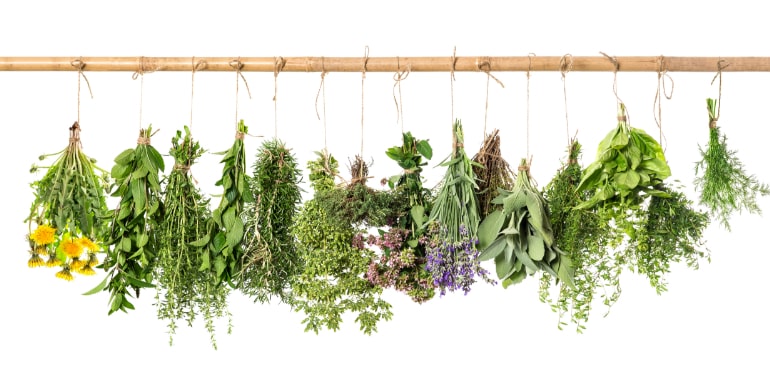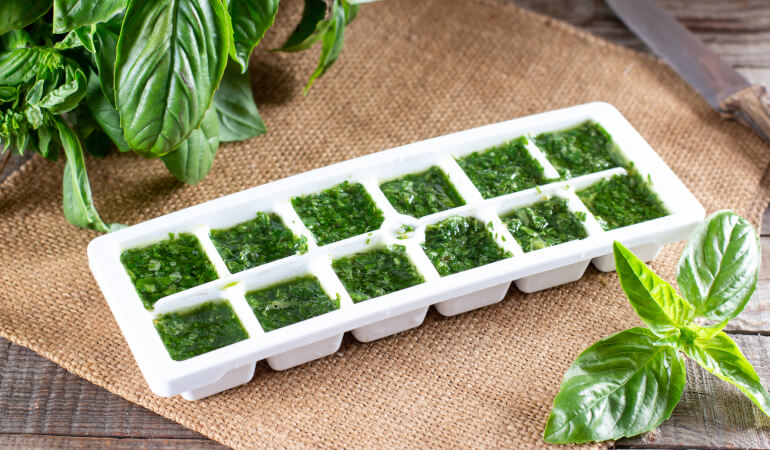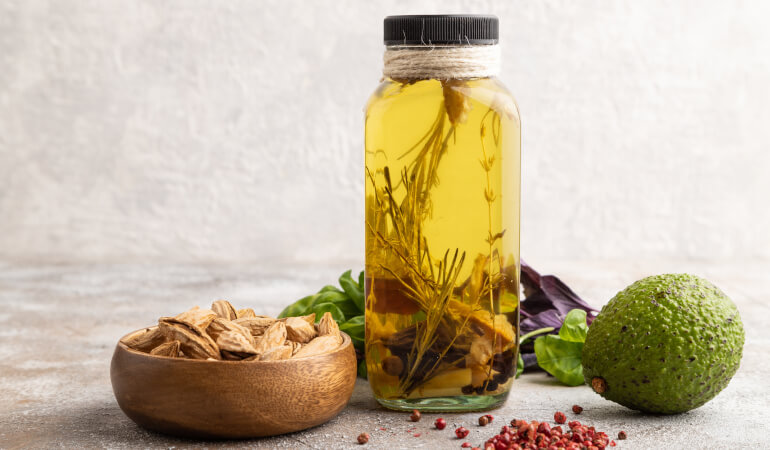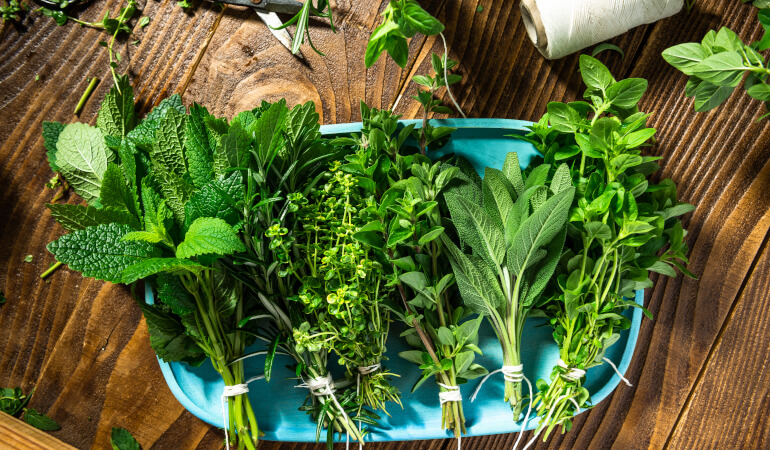Did you know that carefully storing your herbs may increase their shelf life by many months while retaining their bright flavours and critical nutrients? Whether you’re a gardener with an excess of fresh basil or a culinary enthusiast who wants to enjoy summer’s rosemary all year, learning the art of herb preservation is both practical and pleasurable.
In this piece, we’ll look at some techniques for keeping your herbs fresh and flavourful even after they’ve been picked. So, if you’re weary of watching your beloved parsley or mint wilt away in a week or two, hang around—these strategies will ensure you always have a cache of garden-fresh deliciousness on hand!
Table of Contents
When and how to harvest the herbs?
The optimal time to harvest herbs is when the oils responsible for their flavour and aroma are at their peak. Timing all comes down to what part of the plant you’re harvesting and its intended use. Herbs grown for their foliage should be harvested before they flower.
When picking herbs, always make sure that the leaves are clear of pests. One handy tip to ensure that is to rinse the plant with salt water, as it repels the irksome little critters. The water also removes most of the bacteria that can stimulate the wilting process. If you did this, you are left with fragrant, fresh herbs ready to be used or preserved.
Ideally, you should use fresh herbs for cooking as the fragrance and flavour from oils that evaporate into the air are strongest when the crushed leaves are fresh. Some of the quality of fresh herbs can still be retained for later use by applying several methods to preserve them.
Different herb preservation methods explained
Our professional opinion is that you should consider the environment you store your fresh herbs in – temperature, humidity, light, and access to oxygen.
Keep in mind, there are two types of herbs – tender and hardy. The tender ones are more sensitive and demanding. These require that you know a few things, such as:
- Direct sunlight is bad for tender herbs.
- All herbs will manage well in the fridge, but basil needs room temperature.
- No moisture near the herbs, or they will wilt. If you store herbs in jars with water, make sure to change it every day.
- Covering up the herbs with a bag will prolong their life.
Now that’s clear, let’s move on to the different herb preservation techniques you can try. The three most used methods are drying, freezing, or steeping in oil.
How to dry herbs

This traditional method of herb preservation has been used since the old ages. And it is no wonder why – it’s a no-brainer, quite fast to do, and does the job just fine. The one downside to it is that the herbs tend to lose their aroma with time.
- Harvest and wash the herbs. Always start with a good wash under running water to remove the dust and possible bugs off the leaves. Shake off any excess water.
- Spread the herbs to dry on a paper towel. Spread them one by one, so that each leaf has its own place on the towel.
- Place another towel on top of the herbs. Cover them all with another paper towel and press gently.
- Leave them to sit for a few days, until all the moisture has evaporated.
- Store in plastic bags and label them.
If you prefer, you can tie the stems into small loose bundles and hang them upside down in a warm, dry place not directly exposed to sunlight, allowing good air circulation. Just make sure not to leave them for too long, as their flavour will disappear.
Another way is to spread the herbs out to dry on window screens. You can use the backs of chairs to suspend them as well. Turn the leaves often to ensure they dry evenly.
You can even use the microwave. Just put them for 1 to 2 minutes on high power. Different herbs will need different time to dry completely, as they do not all retain the same amount of water.
How to freeze the herbs

Although not the best way of saving the structure of fresh herbs, freezing them still works well, as it preserves the essential oils that give herbs their flavour. The good thing about it is that the culinary herbs are already chopped and ready to be used.
- Harvest and wash the herbs. Never forget to wash away the dust and debris from the leaves.
- Arrange your herbs in ice-cube trays. Another good thing about this is you can organise, tag or remember which herb is where.
- Pour water in the ice-cube trays. Careful not to fill them to the top. Larger cubes melt slowly, causing your already melted herbs to overcook. Frozen herbs will not be good for garnish, use them only for cooking.
- Freeze.
You can also freeze the herbs in olive oil instead of water. This will reduce the browning during cooking that can happen when you just freeze the fresh herbs, as is. You can also get creative – make your own blend of herbs, mixing oregano, thyme, parsley, and sage.
If you store your herbs in plastic bags, thin out the layer as much as you can. And make sure to remove excess air. You can safely store your herbs in the freezer for as long as 6 months.
How to preserve herbs in oil

Infusing herbs in oil is a complicated task, and the end product is exclusively only for external use. Digesting herbal oils might cause botulism poisoning, which often ends fatally.
- Wilt herbs for 12 hours. If your herbs are freshly picked, you have to wash them and leave them to dry.
- Cut herbs into pieces. You can either use a knife, or just tear them with your hands. After that, crush all pieces with a mortar and pestle.
- Put the crushed herbs in a clean jar.
- Add oil. Make sure the herbs are completely covered. Most people use olive oil, but it’s not problematic to use other types of oil either. Also, the jar should not be completely full. The herbs will expand later, so there should be at least two fingers of free space at the top.
- Stir the concoction.
- Cap the jar tightly.
- Keep the jar in a sunny spot. Herbs shouldn’t be in the sun when drying, but only for this method, sunlight is your friend. Shake the jar a few times a day.
- Let it sit for 4-6 weeks.
- Strain the herbs out of the oil with a cheesecloth. After the jar sat in the sun for a few weeks, you can squeeze the oil out and pour into another jar. If you want, you can enrich it even more with Vitamin E oil.
Why you should grow your own herbs?
Although we know you probably don’t need any more reasons to love them, we just can’t get tired of spelling out why they’re indispensable to your garden and home.
- You can grow them virtually anywhere you want – Growing herbs is one of the easiest ways to add edible plants to your garden; they bring diversity to your traditional flower garden and are an excellent way to make a practical statement when you plant them in pots or window boxes right on the kitchen window.
- You can pick and cut the plant and it will continue to thrive. Did you know that herbs, in fact, love to be picked? The plants tend to grow fuller and fuller as you collect some of the leaves.
- The herbs you grow at home are cheaper, fresher, and have a stronger scent than their store-bought counterparts.
- You can use your home-grown culinary herbs for a fresh-from-the-earth touch to your meals or you can store them to be used later on.
- Some of them, like rosemary, basil, and bay leaf, repel flies and mosquitoes. Which, let’s face it, is a great bonus during the hot months.




